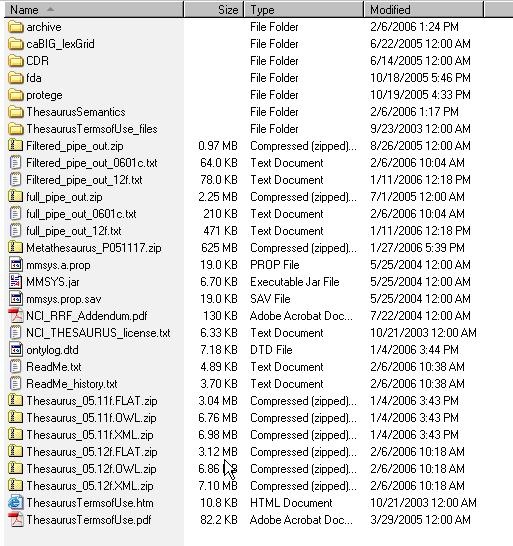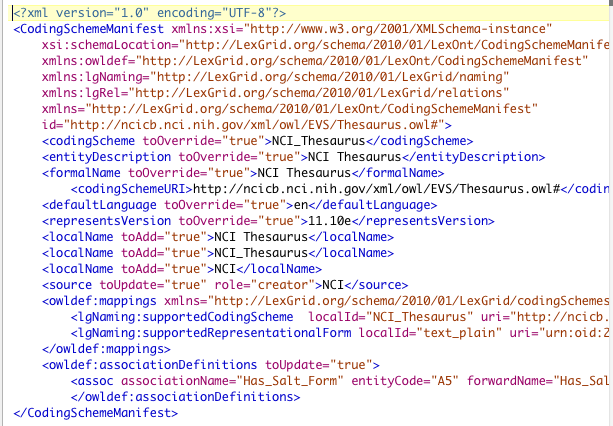 |
Page History
...
Step | Action |
|---|---|
1 | Using a web or ftp client go to the URL: ftp://ftp1.nci.nih.gov/pub/cacore/EVS/ |
2 | Select the version of NCI Thesaurus OWL you wish to download. Save the file to a directory on your machine. |
3 | Extract the OWL file from the zip download and save in a directory on your machine. This directory will be referred to as NCI_THESAURUS_DIRECTORY |
4 | (Optional) Create Manifest and Preferences file. |
5 |
|
| Code Block |
|---|
cd {LEXEVS_HOME}/admin |
For Windows installation use the following command:
| Code Block |
|---|
LoadOWL.bat –in "file:///{NCI_THESAURUS_DIRECTORY}/Thesaurus_10.10d.owl |
For Linux installation use the following command:
| Code Block |
|---|
LoadOWL.sh –in "file:///{NCI_THESAURUS_DIRECTORY}/Thesaurus_10.10d.owl |
This should work best with a "by code" type Thesaurus source.
|
Example output from load of NCI Thesaurus 05.12f
...






